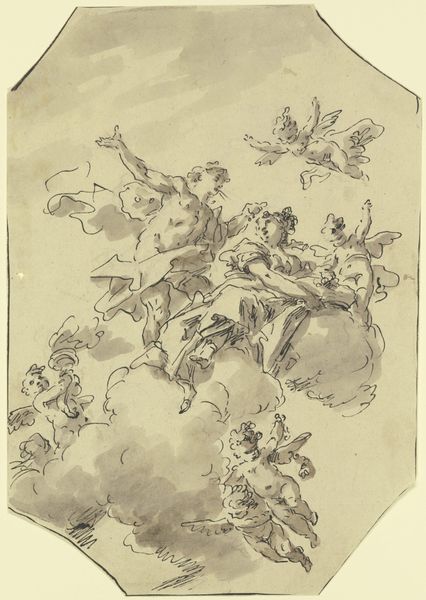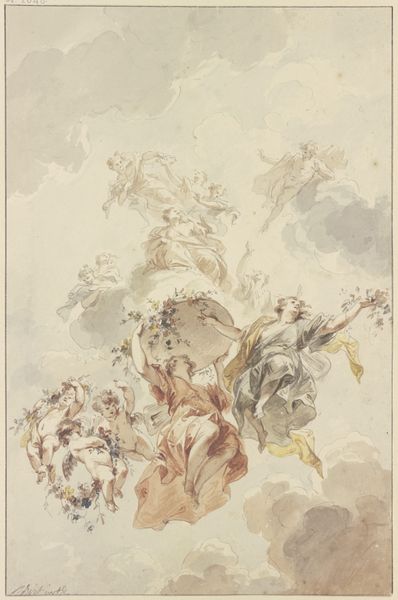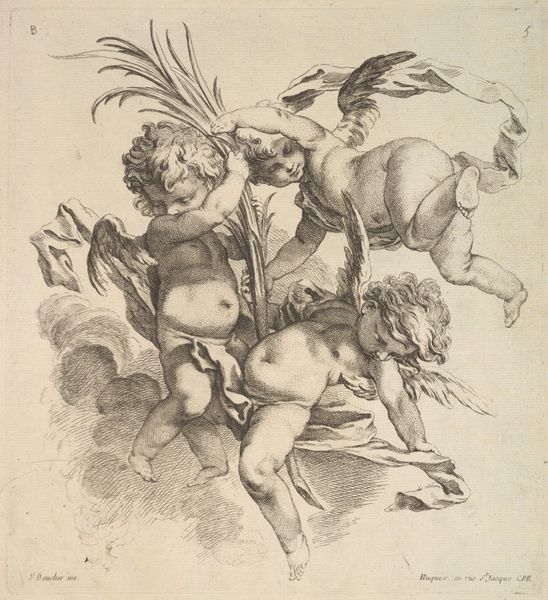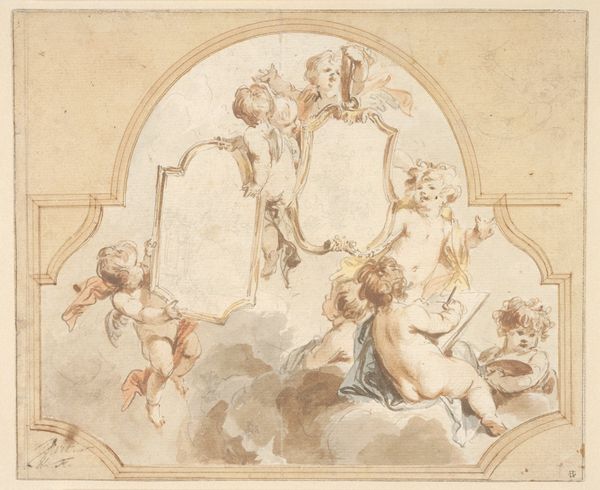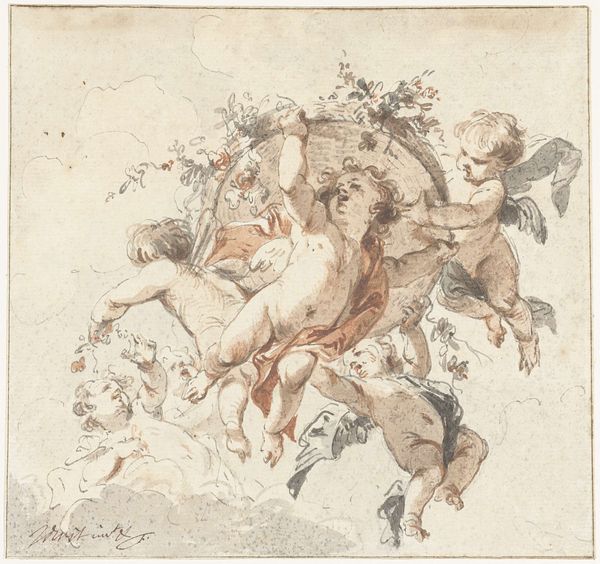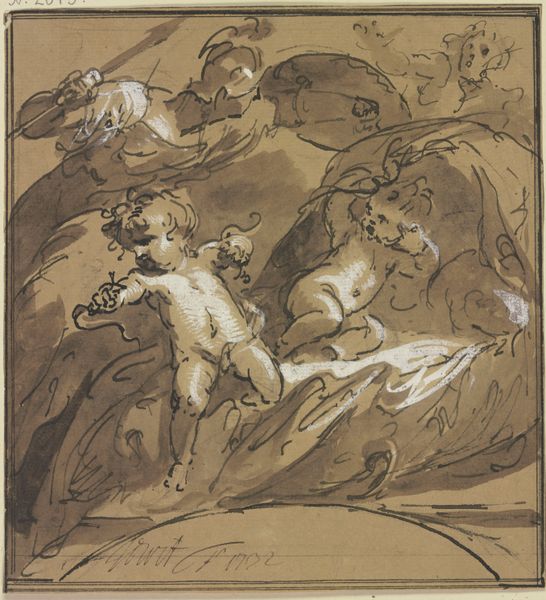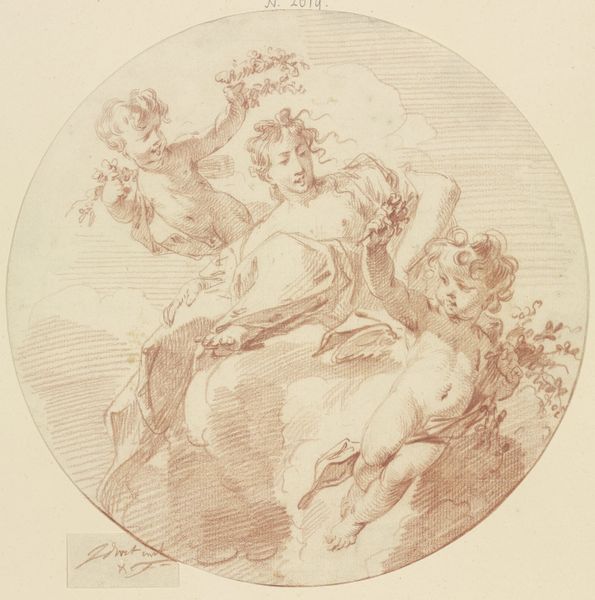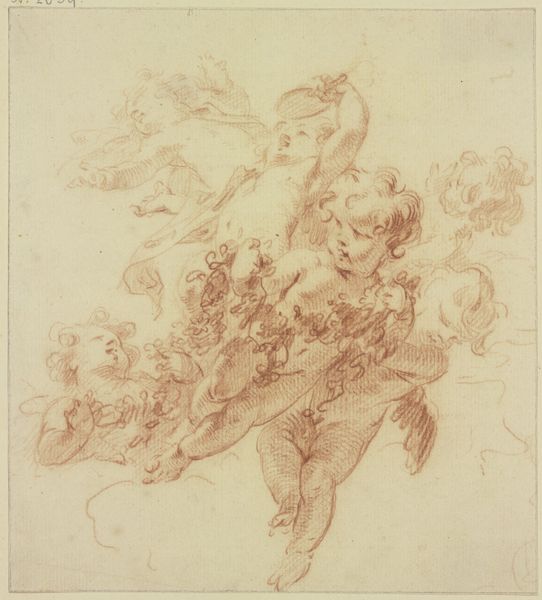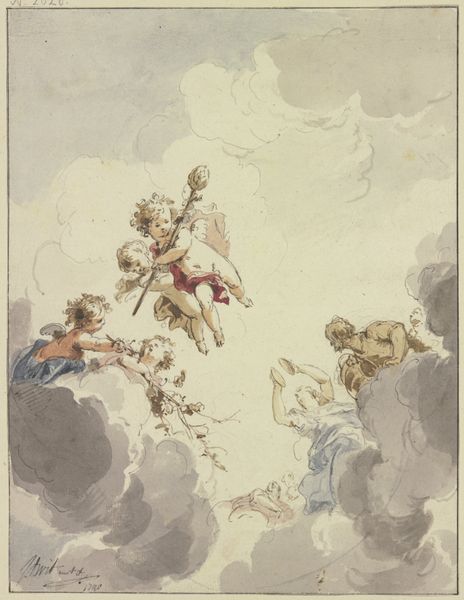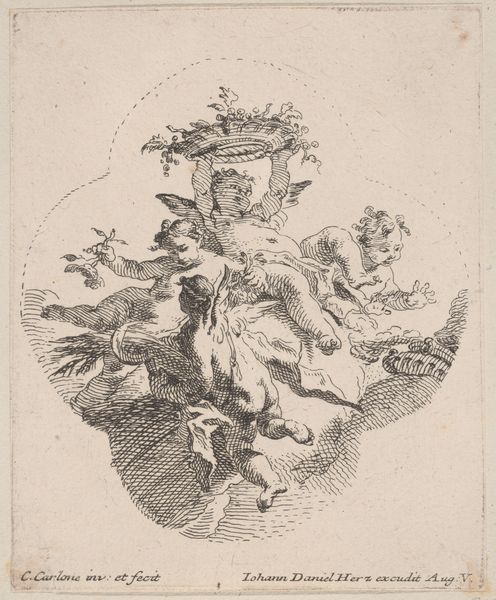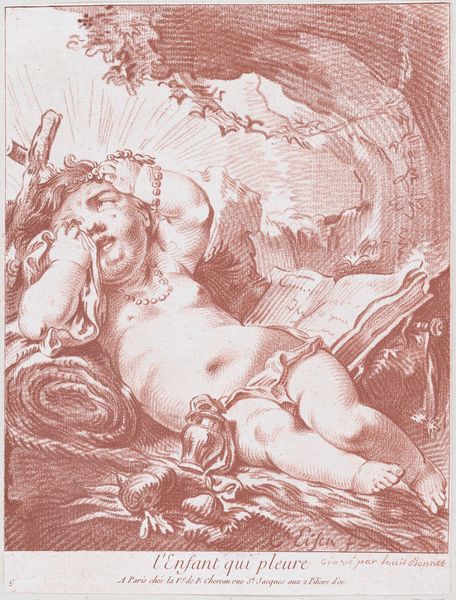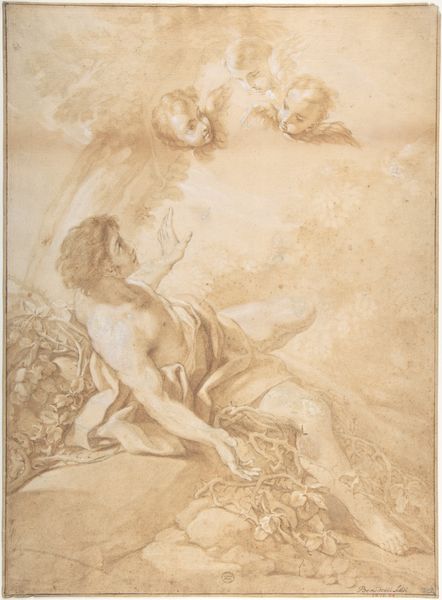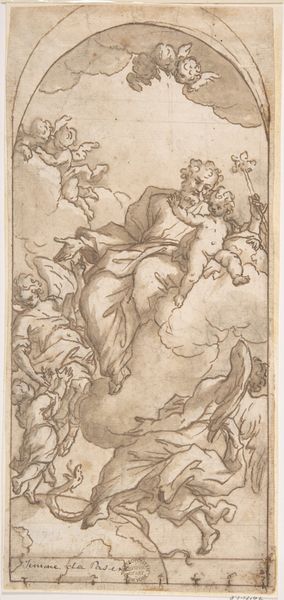
drawing, watercolor, ink
#
portrait
#
drawing
#
allegory
#
baroque
#
figuration
#
watercolor
#
ink
#
15_18th-century
Copyright: Public Domain
Curator: What a fluttery little vision! I'm immediately taken with how the artist captures a playful atmosphere despite the old medium of ink and watercolor. Editor: Indeed. What we have before us is a drawing entitled "Three Cupids", crafted by Jacob de Wit, a Baroque artist whose detailed allegorical depictions often possess that sense of airy lightness that captivates the eye. Curator: Baroque cupids. Always scheming, aren't they? I can practically feel the mischievous energy radiating off the page. I mean, one's got a whole handful of arrows like it's going out of style, while another's dangling…keys? Is that right? Keys to the heart, perhaps, and the other looking in the mirror? What a delightful trinity of temptation and games. Editor: You're correct in your interpretation, keys often symbolize access or secrets. The artist seems quite preoccupied with surfaces, the soft texture of the clouds and the bodies. Consider the way Wit contrasts line and wash to model form, which is fairly striking. The composition guides our eye through this triangle, these figures really take command of the picture plane, which lends the whole arrangement a lovely dynamism. Curator: They look like they're just drifting along! The loose washes certainly contribute to that. Are they harbingers of love or just enjoying a spa day in the clouds, you think? There’s also something wonderful in how De Wit leaves so much open, leaving all these wonderful possibilities available. Editor: Ha! Both, perhaps? Wit often used mythology to communicate in complex and engaging ways. It's clear from this sketch that he had an almost operatic talent, this ability to take mythological elements and evoke these playful sentiments, or perhaps just capture beauty's fleeting expression. I daresay that our experience might lead us toward joy rather than pure allegorical readings. Curator: Well put. A dash of joy amidst our rigorous attempts at art history is what art is for. Editor: Precisely. So go ahead—feel those cherubic arrows, be mindful about the fleetingness of it all, and let yourself float away.
Comments
No comments
Be the first to comment and join the conversation on the ultimate creative platform.
